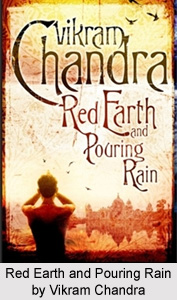 The novel `Red Earth and Pouring Rain` is worth reading as it takes an unparalleled view at the post-adolescent world of a college student, his archpriest counterpart, and the life of an 18th Century man as well. Although a little hard to follow at times, this novel was quite enjoyable and puts a new spin on this genre of reading.
The novel `Red Earth and Pouring Rain` is worth reading as it takes an unparalleled view at the post-adolescent world of a college student, his archpriest counterpart, and the life of an 18th Century man as well. Although a little hard to follow at times, this novel was quite enjoyable and puts a new spin on this genre of reading.
Vikram Chandra was born in 1961 in New Delhi. The prominent author completed most of his secondary education at Mayo College, a boarding school in Ajmer, Rajasthan. After a short stay at St. Xavier`s College in Mumbai, he came to the United States as an undergraduate student. In 1984, he graduated from Pomona College situated in Claremont, near Los Angeles with a magna cum laude BA in English` he had deep inclination towards creative writing so he also studied that. He then attended the Film School at Columbia University in New York. While in the Columbia library he happened upon the autobiography of Colonel James `Sikander` Skinner, a legendary nineteenth century soldier, born of an Indian mother and a British father. This book inspired him to write his first novel Red Earth and Pouring Rain, most of which was written while he attended writing programs at John Hopkins University and the University of Houston from where he achieved an MA and MFA respectively. In June 1997, Vikram was featured in the New Yorker photograph of `India`s leading novelists` and in March 1998, he won a Commonwealth Writer`s Prize. In 2000, Vikram served as co-writer, with writer Suketu Mehta for a popular Bollywood movie `Mission Kashmir`. Presently the author is staying both in Bombay and Washington, DC. At present days he involves in teaching creative writing at George Washington University.
Synopsis:
`Red earth and pouring rain` is a sprawling, ambitious novel with strong exotic elements depicted in vivid prose. There are several stories going at once and not all of them have logical ties to each other. There are a lot of loose ends also. But as a whole this novel is good to read. At the time when the supernatural and allegorical elements came to the forefront and the story became tedious. The book was received with outstanding critical acclaim. It won the David Higham Prize for Fiction and the Commonwealth Writers Prize for Best First Book. It is being translated into nine other languages as well. The main story revolves around the time from early colonial India to modern America with the main protagonists Sanjay. He is the warrior-poet reincarnated as a monkey and Abhay is a young student from America. This novel deals with their stories that we encounter at every turn, interwoven with rambling perfection. While Sanjay recounts his own view of history from around 1750-1900 during the fall of the Mughal Empire to the establishment of the British as colonizers, it is really splendid. Through the narrator the readers can get the feel of that era. Abhay gives his own view of life as a culture-clashed and confused college fellow in late 20th Century America.
The end product is almost epic in scope where the Gods Yama and Hanuman play pivotal roles and the influence of the British Raj materializes even in modern day America. The characters are contradictory at times as Abhay`s youthful experiences are directly in contrast to Sanjay`s own youth. The mood often covers romance; war, magic, destruction, love and betrayal with varying degrees of indulgence and the characters themselves are very also very warm, vibrant and accessible as well.
`Red Earth and Pouring Rain` was published in 1995 by Penguin, India in India, by Faber and Faber in the UK and by Little, Brown in the United States.



















